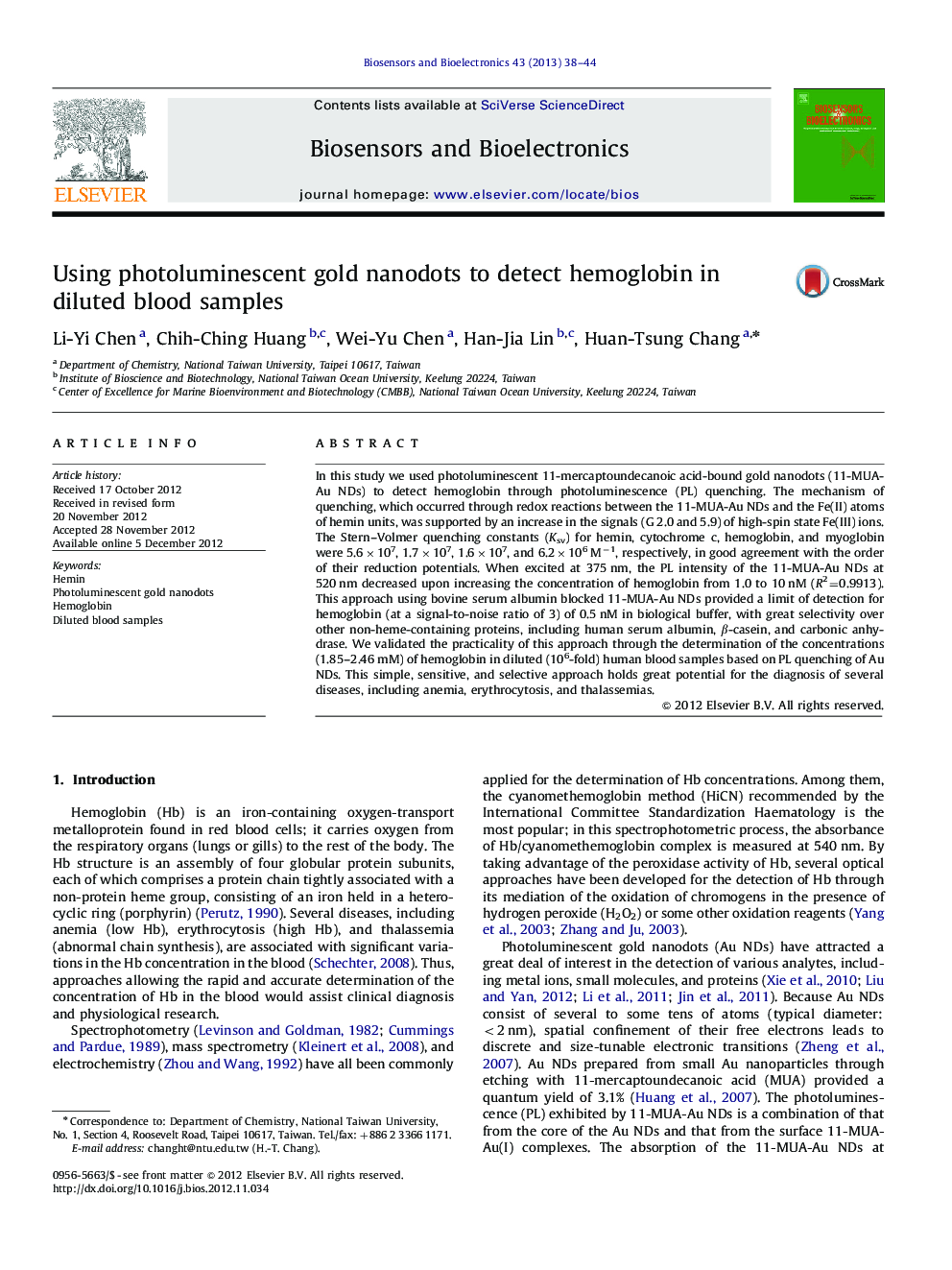| کد مقاله | کد نشریه | سال انتشار | مقاله انگلیسی | نسخه تمام متن |
|---|---|---|---|---|
| 866824 | 1470988 | 2013 | 7 صفحه PDF | دانلود رایگان |

In this study we used photoluminescent 11-mercaptoundecanoic acid-bound gold nanodots (11-MUA-Au NDs) to detect hemoglobin through photoluminescence (PL) quenching. The mechanism of quenching, which occurred through redox reactions between the 11-MUA-Au NDs and the Fe(II) atoms of hemin units, was supported by an increase in the signals (G 2.0 and 5.9) of high-spin state Fe(III) ions. The Stern–Volmer quenching constants (Ksv) for hemin, cytochrome c, hemoglobin, and myoglobin were 5.6×107, 1.7×107, 1.6×107, and 6.2×106 M−1, respectively, in good agreement with the order of their reduction potentials. When excited at 375 nm, the PL intensity of the 11-MUA-Au NDs at 520 nm decreased upon increasing the concentration of hemoglobin from 1.0 to 10 nM (R2=0.9913). This approach using bovine serum albumin blocked 11-MUA-Au NDs provided a limit of detection for hemoglobin (at a signal-to-noise ratio of 3) of 0.5 nM in biological buffer, with great selectivity over other non-heme-containing proteins, including human serum albumin, β-casein, and carbonic anhydrase. We validated the practicality of this approach through the determination of the concentrations (1.85–2.46 mM) of hemoglobin in diluted (106-fold) human blood samples based on PL quenching of Au NDs. This simple, sensitive, and selective approach holds great potential for the diagnosis of several diseases, including anemia, erythrocytosis, and thalassemias.
► 11-MUA-Au NDs were used to detect hemoglobin through photoluminescence quenching.
► This probe exhibited a detection limit of 0.5 nM for hemoglobin.
► This approach was selective for hemoglobin over other proteins.
► This approach was validated in diluted blood samples.
► The approach and HiCN method provided similar results.
Journal: Biosensors and Bioelectronics - Volume 43, 15 May 2013, Pages 38–44